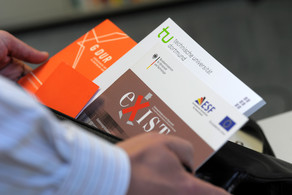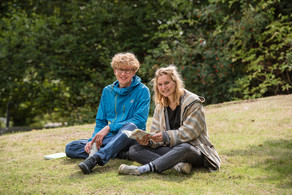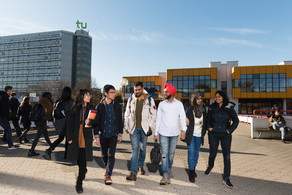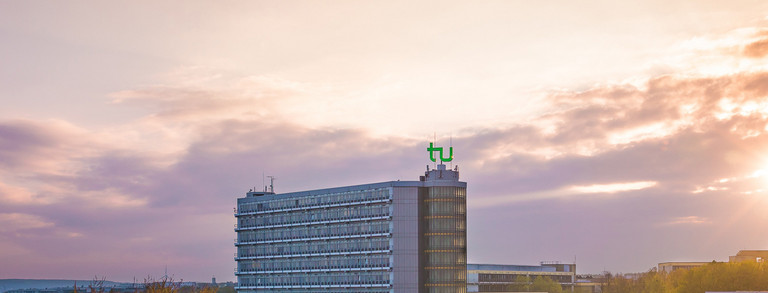New Photovoltaic System Installed on South Campus
- Top News
- Campus & Culture
- Press Releases
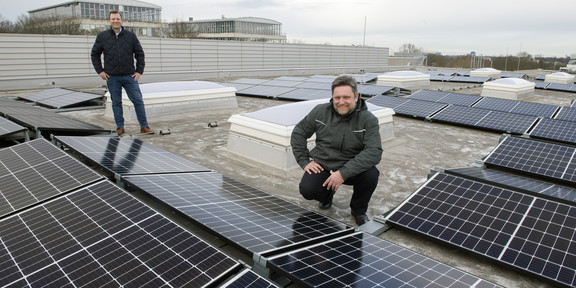
The system on the roof of the Institute of Machining Technology is just one of the measures undertaken by the university to lower emissions of the greenhouse gas CO2 by 40 percent by 2030 in comparison to the baseline of 1990. To achieve this, new constructions – for example for the university’s sports facilities and the new building at Emil-Figge-Strasse 55, but also the new University Library – will be fitted with photovoltaic panels, announced Albrecht Ehlers, Chancellor of TU Dortmund University. The next step is to install a further PV system on Mechanical Engineering Building III on South Campus in the course of this year. The panels there have a total power output of about 99 kilowatt peak (kWp). That would be sufficient to supply about 20 families with electricity for a whole year. The upcoming plans for the new construction measures mean that a total solar power line of about 450 kWp will be installed in the medium term. That is enough to supply around 100 average German households.
On a chilly January day, Peter-Paul Kilian and Christian Suerkemper from Technical Facility Management – Electrical Engineering at the Department of Construction and Facility Management can be found on the roof of the Institute of Machining Technology. They are inspecting the 136 PV modules installed there over a surface area of 229 m2. It is cold, only rarely does the sun break through the clouds – but the system has nonetheless already been feeding electricity into the university’s grid since 18 December last year.
Amortization after 13 years
And this even though the solar modules do not face south, but instead east and west. “This guarantees an optimum power yield throughout the whole year,” says project manager Christian Suerkemper. “At a current electricity price of about 22 cents per kilowatt hour, which the university has to pay, the investment will have paid off in about 13 years,” calculates Peter-Paul Kilian, as the university consumes 100 percent of the electricity it generates.
The PV system on top of the Institute of Machining Technology supplements several small test installations on the roofs of the Test Center for High-Voltage Direct Current Transmission (HGÜ) and the Combined Heat and Power Plant (CHP) on North Campus.
Contact for further information:



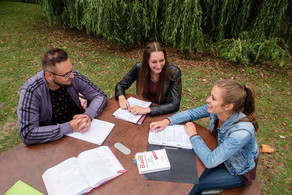
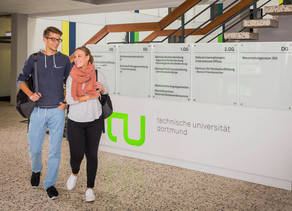
![[Translate to English:] Partner Four hands are holding the green logo of TU Dortmund University](/storages/tu_website/_processed_/1/d/csm_Partner_Nicole_Rechmann_KW_670eba0154.jpg)



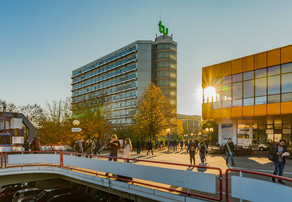
![[Translate to English:] Forschung An apparatus with tubes in a laboratory](/storages/tu_website/_processed_/0/c/csm_Forschung_Juergen_Huhn_4fa3153b51.jpg)
![[Translate to English:] Studium Five students are sitting in a lecture hall. They are talking to each other.](/storages/tu_website/_processed_/c/9/csm_Studium_FelixSchmale_dbdbfb0dd7.jpg)
